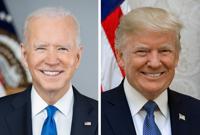(The Center Square) – President Joe Biden on Thursday defended newly released economic growth numbers that fell way short of economists' expectations.
Federal data shows the U.S. Gross Domestic Product grew at an annual rate of 1.6% in the first three months of this year, down from 3.4% in the previous quarter.
The U.S. Bureau of Economic Analysis released the data, which came in well below expectations, raised concerns about the near future of the economy, and sent the stock market downward Thursday morning.
“The big inventory buildup in the third quarter of last year continues being drawn down, which is reducing GDP – in other words, previous economic ‘growth’ was essentially just a transfer of future positive numbers pulled forward to an earlier time period,” E.J. Antoni, an economist at the Heritage Foundation, wrote on X, formerly known as Twitter, after the data was released.
After the BEA numbers came out, Biden released a statement on Thursday calling the economy “strong.”
“Today’s report shows the American economy remains strong, with continued steady and stable growth,” Biden said.
He went on to point to the economic recovery since COVID-19 era shutdowns killed jobs and economic growth.
“The economy has grown more since I took office than at this point in any presidential term in the last 25 years – including 3% growth over the last year – while unemployment has stayed below 4% for more than two years,” Biden said.
Former President Donald Trump commented on the GDP numbers Thursday morning to reporters waiting outside of his court appearance.
“...the GDP just announced is all the way down to 1.6% and it's heading south,” Trump told reporters, as shown on Fox News. “It’s going to get worse … gasoline is going way up. Energy costs are going way up, and the stock market is in a sense, crashing. This is Bidenomics. It's catching up with him."
Notably, BEA data showed Americans’ savings accounts diminished in the first three months of this year.
“Personal saving was $755.7 billion in the first quarter, compared with $815.5 billion in the fourth quarter,” BEA said. “The personal saving rate – personal saving as a percentage of disposable personal income – was 3.6 percent in the first quarter, compared with 4.0 percent in the fourth quarter.”











